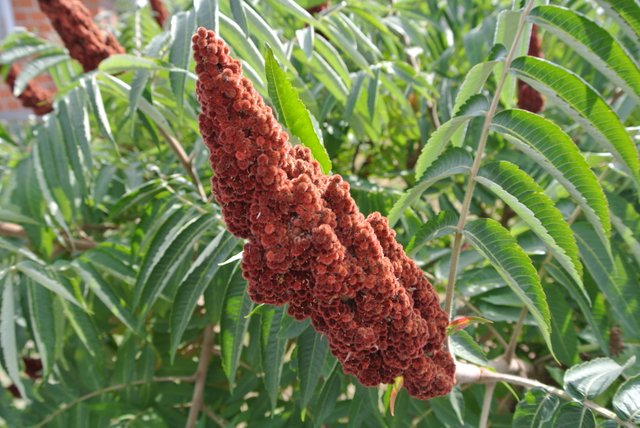Staghorn sumac (lat. Rhus typhina)
Staghorn sumac (lat. Rhus typhina) is a species of flowering plant in the family Anacardiaceae, native to eastern North America. It is primarily found in southeastern Canada, the northeastern and midwestern United States, and the Appalachian Mountains, but it is widely cultivated as an ornamental throughout the temperate world.
Uses
Rhus typhina fruit
Some beekeepers use dried sumac bobs as a source of fuel for their smokers.
The fruit of sumacs are edible. They can be soaked and washed in cold water, strained, sweetened and made into a pink "lemonade" sometimes called "Indian lemonade". The drink extract can also be used to make jelly. The shoots can be peeled and eaten raw. The leaves and berries of staghorn sumac have been mixed with tobacco and other herbs and smoked by Native American tribes. This practice continues to a small degree to this day.
All parts of the staghorn sumac, except the roots, can be used as both a natural dye and as a mordant. The plant is rich in tannins and can be added to other dye baths to improve light fastness. The leaves may be harvested in the summer and the bark all year round.
(source)
https://en.wikipedia.org/wiki/Rhus_typhina
This photo is taken in city Prijedor, in Republic of Srpska, Bosnia and Herzegovina.
Photo is mine property and is shot with my micro 4/3 digital camera Nikon 1 J1.
You can use this photo for commercial purposes. No attribution required.
